Tomb 43

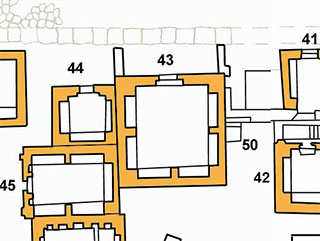 Tomb 43 is detached on three sides and is looking out over the Via Severiana.
Tomb 43 is detached on three sides and is looking out over the Via Severiana.
The right wall leans against tomb 44 and a part of the back wall of tomb 45.
The burial chamber has an open court with the black-and-white mosaic described in the introduction to this necropolis. We see two ships with bulging sails, followed by two rowing boats. The boats are symmetrically placed around the famous lighthouse of Portus. The lighthouse consists of four floors which are gradually more narrow. All the floors have windows and the lower floor is provided with a door. From the top, flames are rising up into the air. Beside the lighthouse is the Greek inscription which says:
"This is a place free of fear"
This inscription can be interpreted in two ways. The first points to an allegoric end of the journey of life after which in the harbour (the death as final destination) one should find peace and quiet. The other explanation is more mundane and refers to the sailors reaching the safe harbour. In the last case the mosaic could point to the profession of the owner of the tomb.
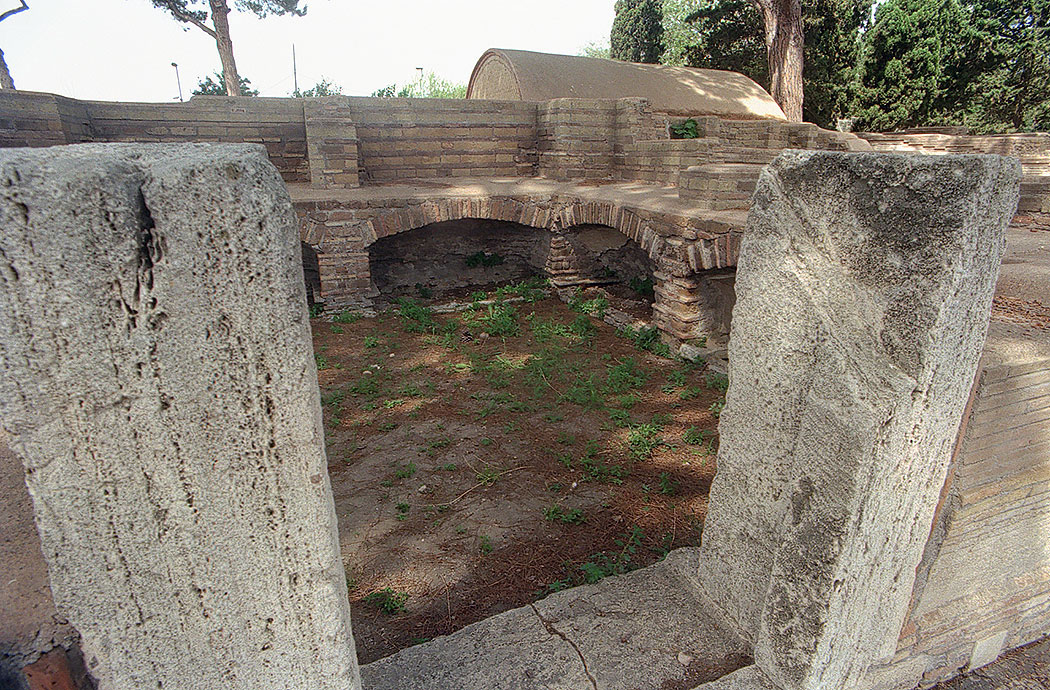
The floor consisted of slabs of marble covering twelve formae for three bodies each.
The grave must have had a rich decoration. During the excavations there were still paintings in the lower arcosolia of both the side walls. In the first niche of the right wall a marshland was depicted with ducks and plants. A well-known scene in this necropolis. One of the lower niches of the left wall contained a picture of a lion hunt with two hunters hiding themselves behind their oval shields.
These decorations are pointing to a date at the end of the second century or the beginning of the third century AD.
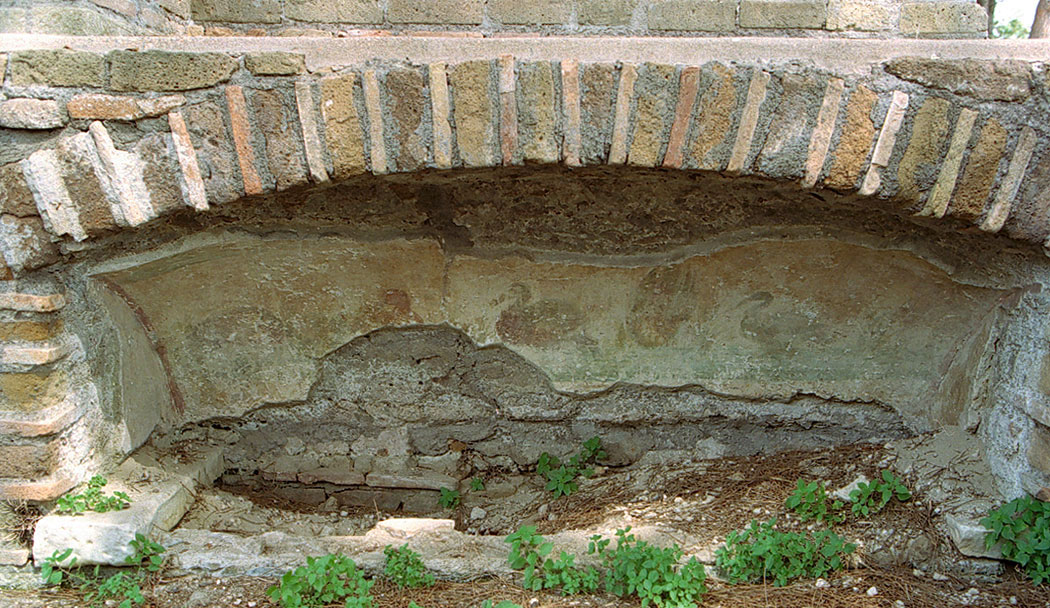
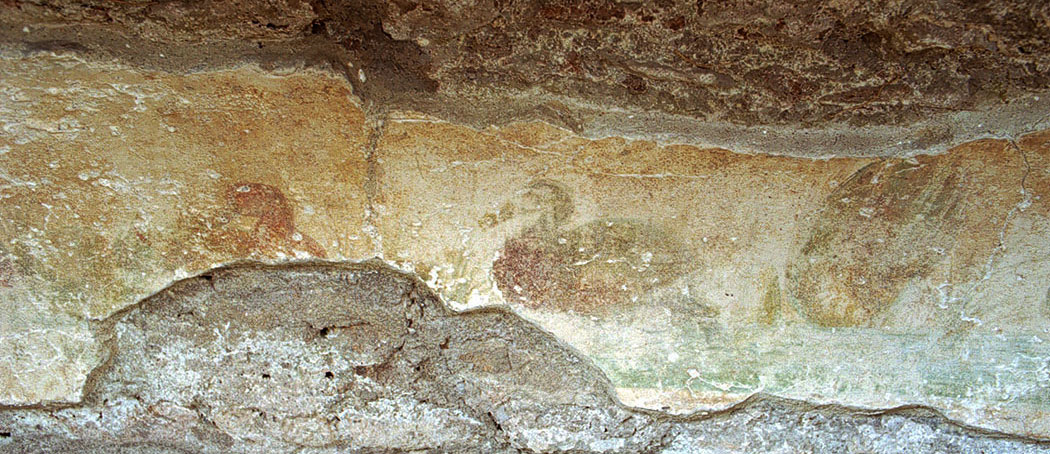
In tomb 43 a fragment of a sarcophagus with an inscription was found:
[D(is)] M(anibus)
[O]STENSIAE FILVME
NETI B(ene) M(erenti) F(ecit) OST(iensis) SIM
PLICIVS COIVGI PI
[[PI]]ENTISSIMAE FECIT
This (sarcophagus) was made by Ostiensis Simplicius for his devout wife, Ostensia Filumena1.
- Sources
- Russel Meigs - Roman Ostia, At the Clarendon Press 1973
- Guido Calza - Necropoli nell'Isola Sacra'(1940)
- Dr. Jan Theo Bakker.
- Hilding Thylander - Inscriptions du port d'Ostie (Lund C W K Gleerup 1952).
- Ida Baldassarre, Irene Bragantini, Chiara Morselli and Franc Taglietti - Necropoli di Porto, Isola Sacra (Roma 1996).
- Notes
- 1:On the third line of the inscription is written: b(ene) m(erenti) f(ecit). The word “fecit” is also used on the fifth line and thus superfluous. Also the word “pi” at the end of line four is probably the beginning of the word “pientissimae” on the fifth line and so also here double. Thylander: “Inscriptions du port d’Ostie”.-Thylander: “Inscriptions du port d’Ostie”.
Waardeert u ons werk?
Wordt lid van Roman Ports en ontvang het boek of doe een donatie!
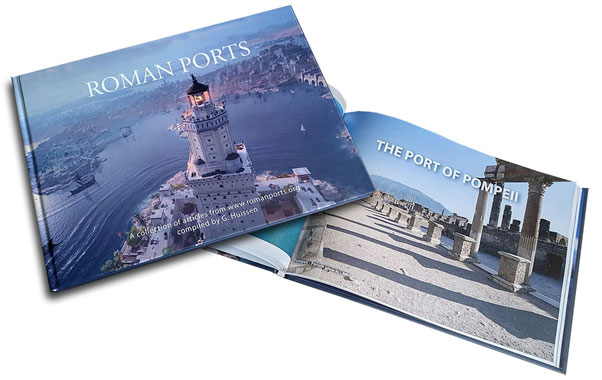 Wordt lid en steun ons
Wordt lid en steun ons
Isola Sacra Index (N)

Speciale sectie over de Romeinse begraafplaats van Portus (Engels)....
Lees meer...De teruggevonden vloot van Pisa

In 1998 werd bij toeval een ongelooflijk archeologisch erfgoed ontdekt in de buurt van het station Pisa San Rossore....
Lees meer...Leptiminus
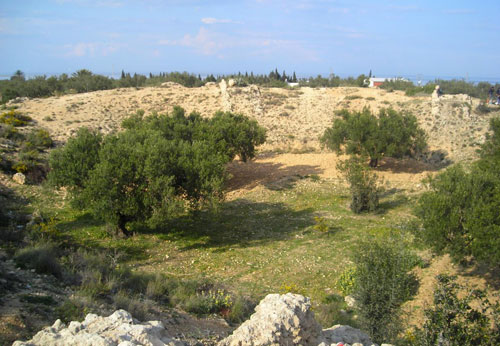
Op de plaats van het huidige Lamta aan de oostkust van Tunesië lag al in de oudheid een havenstad met de naam Leptis Minor ....
Lees meer...Romeins Zeehandelsrecht

Het Romeinse recht is het fraaiste monument dat Rome aan West-Europa heeft nagelaten....
Lees meer...Sullecthum (Salakta)

In de Sahel, in de Tunesische provincie Madhia vinden we aan zee het kleine stadje Salakta....
Lees meer...
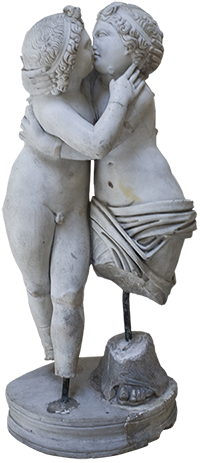 We are committed to providing versions of our articles and interviews in several languages, but our first language is English.
We are committed to providing versions of our articles and interviews in several languages, but our first language is English.